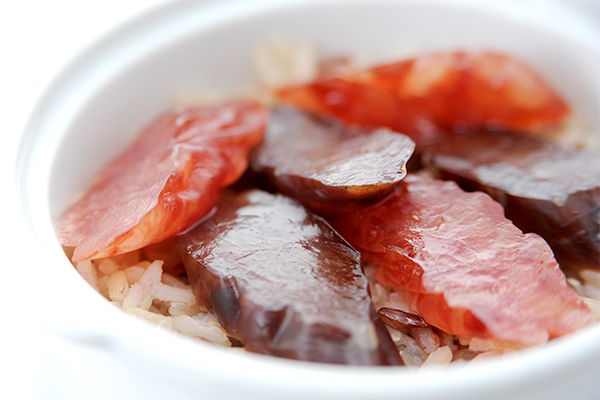Teochew City Seafood Restaurant
by Kurt Ganapathy
@ 30 Jun 2017

Originating in the Chaoshan region of eastern Guangdong, Teochew cuisine is known for its lightness of flavour with fresh seafood and vegetables often taking centre stage. Teochew City Seafood Restaurant stays true to these traditions while adding modern twists to the ingredients and cooking methods.
We begin with a small cup of "kung fu" tea, a customary Teochew pre-meal palate cleanser, before the cold abalone and kiwi fruit is served. A ten-headed Australian abalone is braised in superior broth for four hours and served with a kiwi fruit spiced with Thai chilli sauce. This dish allows you to enjoy the unadulterated flavour and springy, chewy character of the abalone without any distractions. The addition of kiwi fruit is symbolic of Teochew City's and Executive Chef Cheung Kwok Wai's approach to modern Teochew cuisine. Chef Cheung tells us that a healthy revolution is sweeping across the cuisines of China including teochew and increased use of fruits is part of this trend.
Continuing with the 'ying' style, we moved on to one of the restaurant's signature dishes, the Teochew cold crab. The crabs are brought in live where they are put on ice until preparation time. The crabs are then boiled in water with a secret mix of ingredients and served with two sauces on the side - plum and garlic chilli. The natural sweetness on the crab really emerges in this dish, accentuated by the plum sauce and given a satisfying kick by the garlic chilli sauce.
Next, a teochew take on dish seen throughout much of Chinese cuisine, shark's fin soup. This double boiled superior shark's fin soup with fish maw and chicken differs from its cousins from other regions in that all the ingredients are stewed together. The result is a cloudier broth with more intense yet still clean-cut flavours.
About as rich as Teochew cuisine gets, the pan-fried prawn ball with special sauce is a real treat. The prawns are deep fried to a firm crisp after being coated with egg white and presented on pieces of papaya; another healthy twist.
Teochew steamed pomfret is also a house specialty here: part steamed and partially poached in a fish sauce and pepper superior broth with an array of fresh, preserved and pickled vegetables. It is served with more broth than its counterparts from other parts of China, which tend to be "drier". This is arguably one of the best ways to enjoy the highly prized fish with its flavour not overwhelming by any of its accompanying ingredients.
Popular throughout Guangdong province, the familiar taste of lap cheong (pork sausages) reaches a peak when steamed with brown rice. Again, with health in mind, the brown rice replaces conventional white rice and has a distinctive and attractive fragrance that enrobes the lap cheong.
While Teochew cuisine traditionally does not have desserts, yam paste with ginko nuts has become a much loved finale to meals. For this dish, Chef Cheung sources a special type of yam which is starchier, steaming it and mashing it into a paste with a consistency close to that of peanut butter with just the right amount of sweetness.
We finish in the way we began with - another shot of "kung fu" tea. KG
 Originating in the Chaoshan region of eastern Guangdong, Teochew cuisine is known for its lightness of flavour with fresh seafood and vegetables often taking centre stage. Teochew City Seafood Restaurant stays true to these traditions while adding modern twists to the ingredients and cooking methods.
Originating in the Chaoshan region of eastern Guangdong, Teochew cuisine is known for its lightness of flavour with fresh seafood and vegetables often taking centre stage. Teochew City Seafood Restaurant stays true to these traditions while adding modern twists to the ingredients and cooking methods.